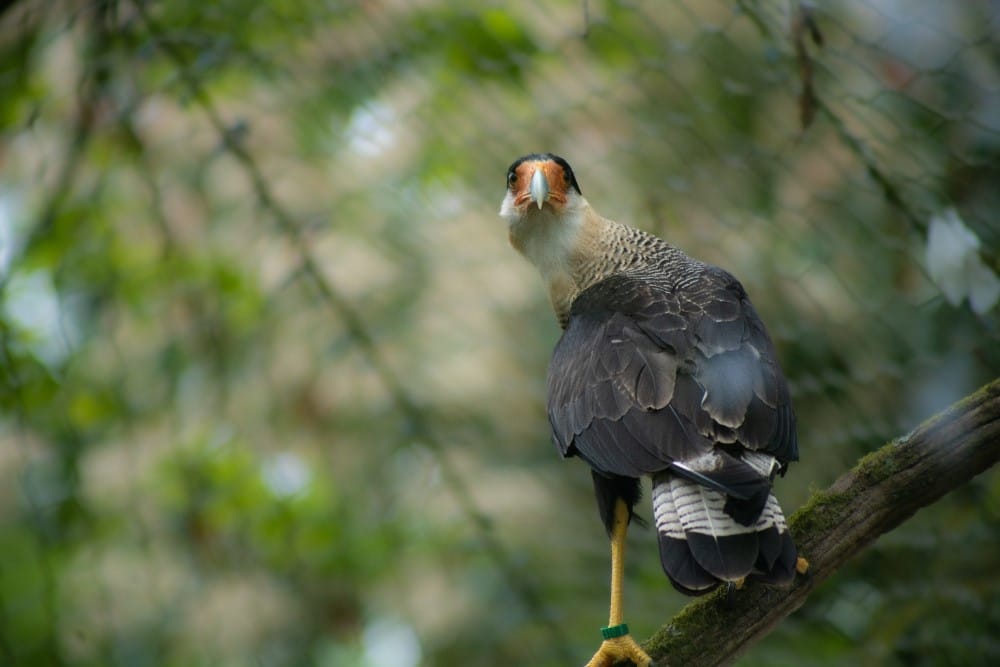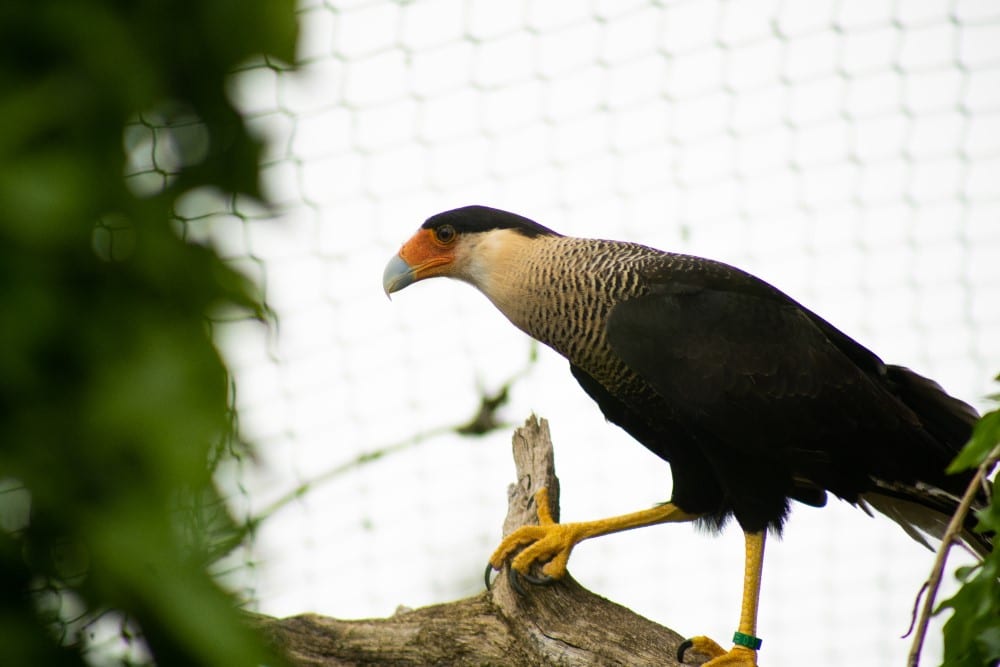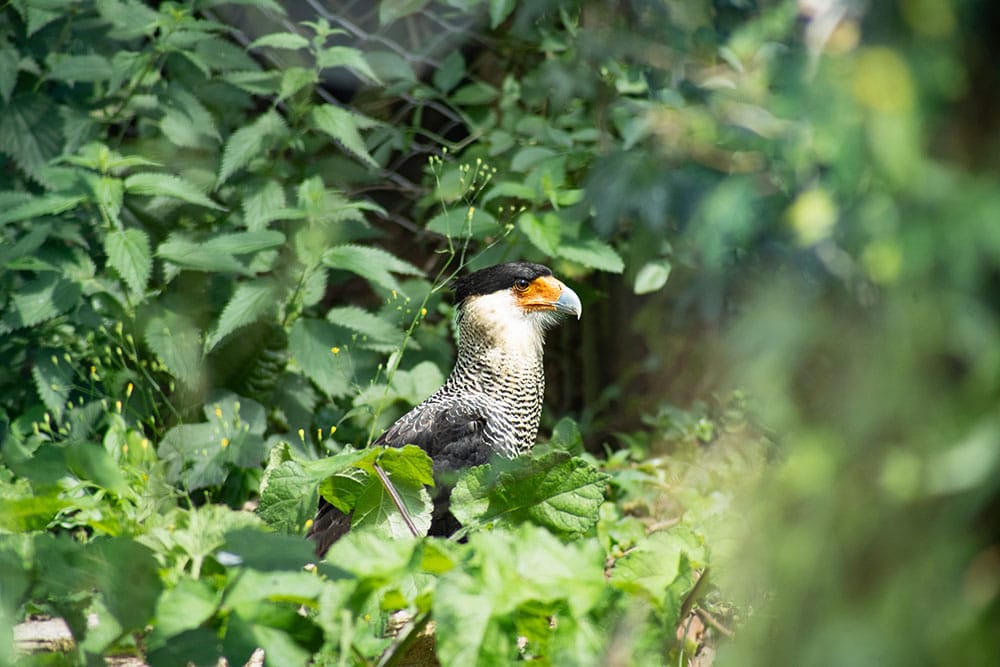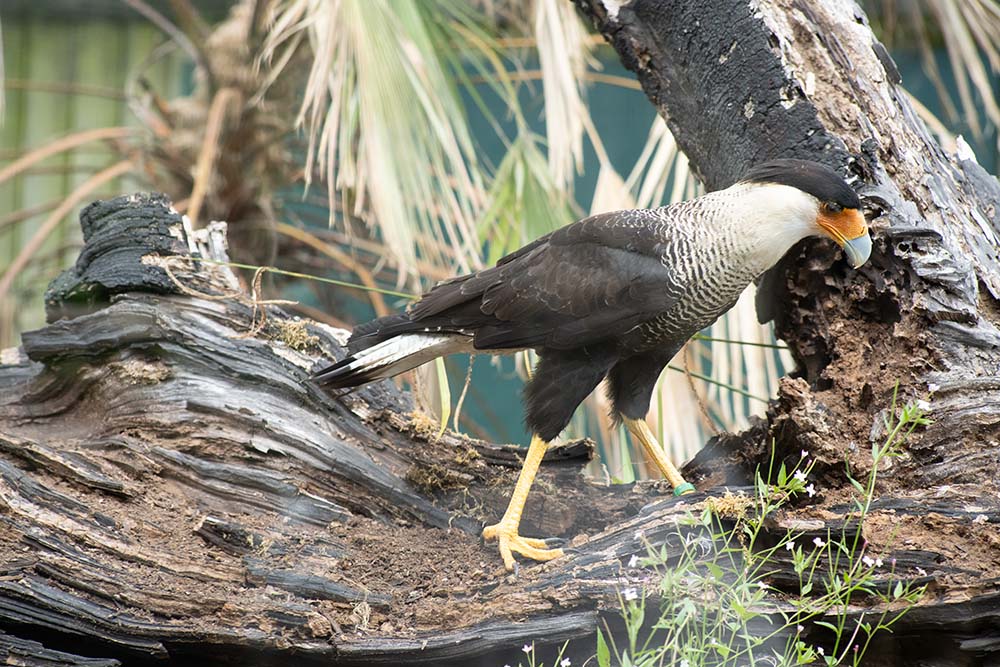Southern caracara
Common name: southern caracara
Scientific name: Caracara plancus
The southern caracara is a striking bird of prey found across South America, known for its intelligence, adaptability, and opportunistic feeding habits. Unlike many other raptors, caracaras are often seen walking on the ground, scavenging for food, and even using problem-solving skills to access meals.
Southern caracaras are part of the falcon family, but their behaviour is quite different from typical falcons. Rather than relying on high-speed dives to catch prey, they are often seen patrolling open areas, searching for food on foot or using their strong beaks to tear apart carrion. Their diet is extremely varied, making them highly adaptable to different environments. They are often observed stealing food from other birds, a behaviour known as kleptoparasitism.
Fast Facts
-
Status
Least Concern
-
Size
50-60cm in length, with a wingspan of around 120cm
-
Lifespan
Up to 30 years in captivity
-
Incubation
Around 30 days
-
Young
Clutch size of 1-4 eggs
In the wild
Southern caracaras are opportunistic feeders with a remarkably diverse diet. Rather than relying on high-speed dives to catch prey, they are often seen patrolling open areas, searching for food on foot. These highly opportunistic birds have a very diverse diet ranging from carrion and livestock carcasses to human refuse, carnivore faeces and live prey including birds and insects.
They are strong runners because of their long legs and often pursue prey on the ground and they are often observed stealing food from other birds, a behavior known as kleptoparasitism.
Their strong beaks allow them to tear into tough carrion, while their sharp talons help them grasp live prey.
Southern caracaras are known for their problem-solving skills, sometimes using tools or working together to obtain food. These birds will often turn over small rocks and debris to find invertebrates such as insects, molluscs and arachnids.
Southern caracaras are found in open landscapes across South America, including grasslands, savannas, wetlands, and coastal regions. Their range extends from central Argentina to the Amazon Basin and even parts of Florida, where they have been introduced. These birds are highly adaptable and can thrive in both natural and human-altered environments, such as farmland and urban areas.
Unlike many raptors that rely solely on hunting, caracaras are known to scavenge around roadsides, rubbish dumps, and farms, taking advantage of whatever food sources are available. Their intelligence and resourcefulness have helped them survive in a rapidly changing world.
Southern caracaras are monogamous and form strong pair bonds. Breeding typically occurs in late winter and early spring. They build large stick nests high in trees, cliffs, or even on man-made structures. A typical clutch consists of two to three eggs, which are incubated for about a month. Both parents share in feeding and protecting the chicks, ensuring a high survival rate.
Juvenile caracaras have duller plumage than adults, with brownish tones that gradually change to the distinctive black, white, and orange coloration seen in mature birds.
While southern caracaras are classified as Least Concern, meaning they are not currently at risk of extinction, they do face challenges from habitat destruction and human conflict. Farmers sometimes consider them pests due to their scavenging habits, while road traffic poses a danger as they often feed on roadkill. Despite these threats, their adaptability has allowed them to maintain stable populations across their range.
Southern Caracara are listed as being of Least Concern on the International Union for Conservation of Nature’s (IUCN) Red List of Threatened Species with numbers thought to be increasing.
This growth is partly due to deforestation, which has created more suitable habitat for caracara.
As highly intelligent and adaptable birds, southern caracaras have proven to be resilient in a changing world. Ongoing conservation efforts will help ensure they continue to thrive in the wild for generations to come.



